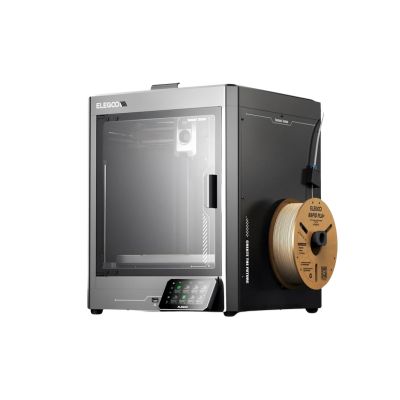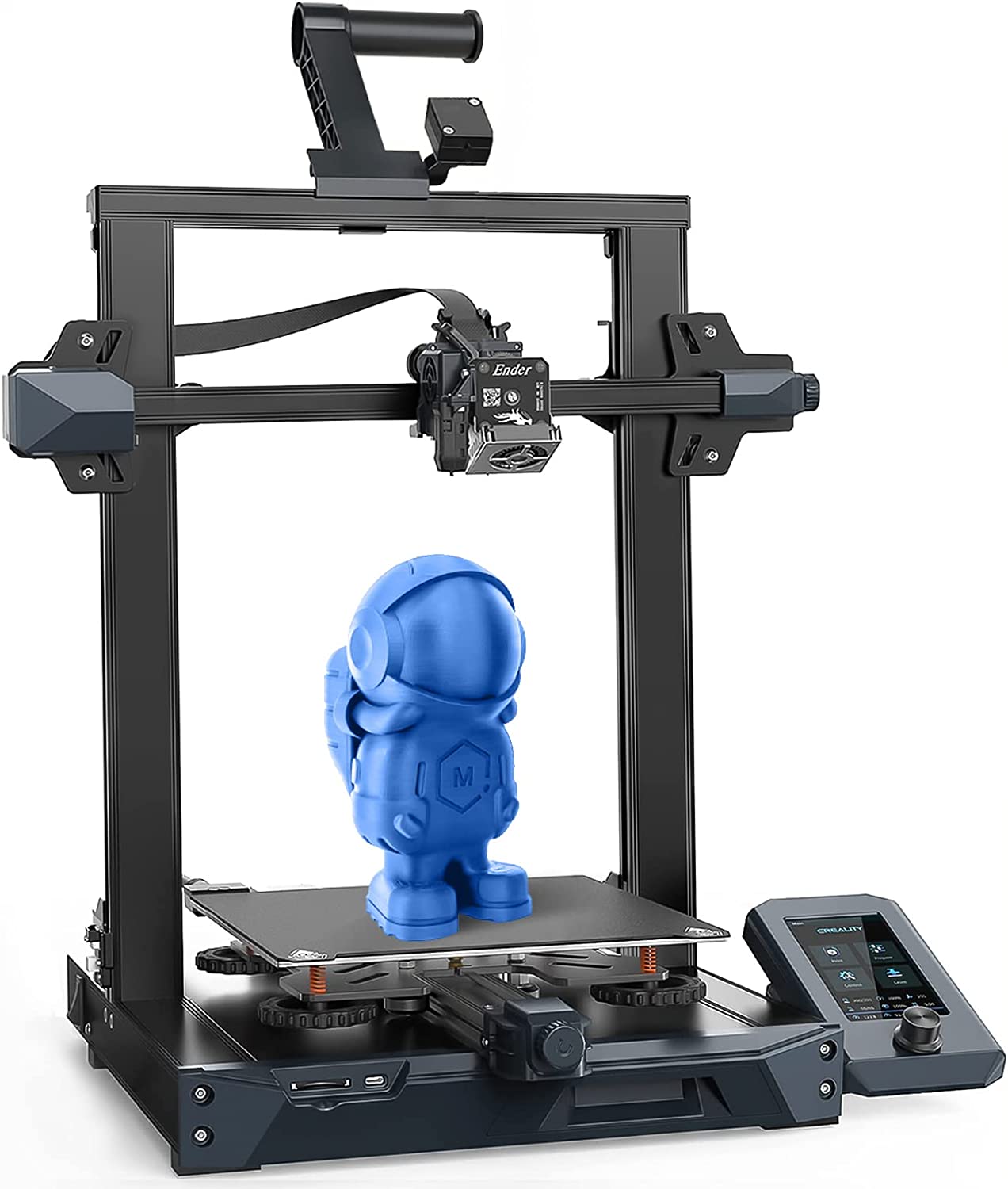Compare Centauri Carbon vs Ender 3 S1
Comparison between the best 3D printers
Choose the best 3D printer at the best price. The cheapest 3D printers are here.
Buy a 3D printer here with 3D Fila.
 |
 |
|
| Model | Centauri Carbon |
Ender 3 S1[BUY Ender 3 S1] |
| Printing Material | Filament | Filament |
| Buy Filament for Elegoo Centauri Carbon | Buy Filament forCreality 3D Ender 3 S1 | |
| Estimated price | $500,00 | $399,00 |
| Manufacturer | Elegoo | Creality 3D |
| Release Year | 2025 | 2021 |
| Print Volume [mm] | 256x256x256 | 220x220x270 |
| Printer Size [mm] | 500x500x600 | 455x490x625 |
| Weight [kg] | 17,5 | 9,1 |
| Power Loss Recovery | YES | YES |
| Enclosed printer | YES | NO |
| Bed Leveling | Automatic | Automatic |
| Filament End Sensor | YES | YES |
| Bed type | Heated | Heated |
| Power supply system | Direct Drive | Direct Drive |
| Standard nozzle | 0,4 | 0,4 |
| Maximum Nozzle Temperature [°C] | 300 | 260 |
| Maximum Bed Temperature [°C] | 110 | 100 |
| Maximum printing speed [mm/s] | 500 | 180 |
| Filament holder | YES | YES |
| Camera for supervision | YES | YES |
| Recommended filaments | PLA, PETG, ABS, ASA, TPU, NYLON, CARBON FIBER | PLA, TPU, PETG, ABS |
| Recommended slicers | Elegoo Slicer, Orca Slicer | Cura, Simplify, Slic3r, IdeaMaker, Creality Slicer e outros |
| Maximum Resolution [mm] | 0,1 | 0,05 |
| Processor | ||
| Display | Touchscreen 4,3'' | Display 4,3'' |
| Power Supply | 350 W | |
| Connectivity | WiFi, SD, USB | SD / USB |
| Operating systems | Windows, Linux e Macbook | Windows, Mac, Linux |
| Date of registration in the system | 2025-02-10 | 2023-03-28 |
| Release date | 2025 | 2021 |
| Extra features | The Elegoo Centauri Carbon is a CoreXY 3D printer with an enclosed structure, direct drive extruder, and hardened steel components for abrasive materials. It features automatic bed leveling, a touchscreen, a filament cutting system, and an elongated nozzle designed to reduce clogs. It offers Wi-Fi connectivity for remote file transfer and runs on a Klipper-based firmware, providing advanced control and precise adjustments. | The Creality Ender 3 S1 printer stands out for its easy assembly and quiet operation. It has automatic bed leveling and a direct drive system, providing high-quality prints. The design is sleek, with flat cables in mesh sleeves and a magnetic bed. The Creality Sprite extruder is lightweight and developed in-house, supporting a maximum nozzle temperature of 260 degrees. It includes a filament run-out sensor and power loss recovery, with a dual Z-axis for greater support and stability. The build plate is flexible steel with PC coating, and the printer supports a wide variety of filaments. |
| Support for multiple colors and materials (AMS and CFS) | NO | NO |
Notes * |
||
| Cost-benefit | 8 / 10 | 7 / 10 |
| Hardware | 6 / 10 | 2.4 / 10 |
| Tela | . | . |
| Print volume | 4 / 10 | 3 / 10 |
| Performance | 4 / 10 | 1 / 10 |
| [BUY Ender 3 S1] |
Conclusion |
| In comparing the Elegoo Centauri Carbon and the Creality 3D Ender 3 S1, both printers present unique features catering to different user needs and preferences. The Centauri Carbon, released more recently, boasts a larger print volume, enclosed structure, and higher maximum nozzle temperature, making it a strong contender for users looking for versatility and potential for printing with a diverse range of advanced materials. Its automatic bed leveling, touchscreen interface, and enhanced connectivity options add to its appeal, especially for those who value convenience and precision in their printing processes. On the other hand, the Ender 3 S1, while more budget-friendly, retains a solid performance profile with its easy assembly and reliable printing capabilities. It has a slightly smaller build volume but still supports a variety of common filaments. The quieter operation and dual Z-axis contribute to its user-friendly experience, catering well to newcomers in the 3D printing space. In terms of overall value for their respective price points, the Centauri Carbon offers a better cost-benefit ratio especially for those requiring advanced features and future-proofing their purchase. However, the Ender 3 S1 is a commendable choice for users with simpler printing needs or those just starting on their 3D printing journey. Ultimately, the decision should hinge on individual requirements—whether users prioritize cutting-edge technology and larger print capacities, or seek affordability paired with dependable performance. |

